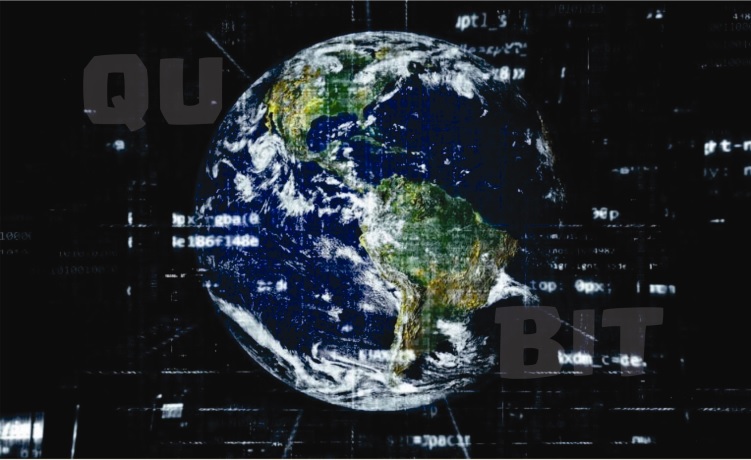Quantum Internet, connection at the speed of light

September 29, 2020
Traditional computing faces escalation and security challenges that could be potentially impassable. For this reason, the next giant step for information and communication technologies, at least in special contexts, has been seen in the quantum computing paradigm.
All the processors of these devices use a binary information system that distinguishes only two states, voltage on and off, zeros and ones representing the passage of current through their circuits.
In contrast, a quantum system takes advantage of phenomena described by quantum mechanics, such as state overlap, which allows handling units of information with more complex parameters called qubits and entanglement, by which it is possible to equalize the quantum state of two or more objects.
Currently, data is transmitted via bit. Quantum entanglement requires qubits, quantum unity.
With entanglement, two particles at a distance such as an atom, electron, or photon of light become quantum units represented by one and a zero at the same time. If two particles are intertwined, the properties of one particle change when the other’s properties change, instantly and as far apart as they are with each other. This occurs because both were produced by the same process; for example, two photons emitted by an atom or two electrons emitted by a nucleus in beta disintegration. Such particles, thus generated, will remain united in this spatial way as long as nothing alters them.
One of the main advantages of this computing method is that the information transmitted would be virtually impossible to hack. Through entanglement it is possible to communicate two quantum systems instantly and encrypt information on them. In turn, since the information would be stored in qubits with state overlay, the content would be impossible to observe outside the interlaced system without modifying it, a situation described by Non-Cloning Theorem.
The different quantum applications
There are different quantum applications beyond computing itself, so that we are currently working in parallel on the development of these technologies based on quantum information theory
Quantum communications
Consist of the transmission of information using the principles of quantum mechanics and properties such as quantum entanglement and quantum teleportation. Its development is mainly based on quantum cryptography and quantum computing, it is projected as the ideal future means of communication due to the great contribution in the area of computer security
Quantum cryptography
Is based on the principles of quantum mechanics to ensure the absolute confidentiality of the information transmitted. One of its most important properties is that if a third party tries to spy during the creation of the secret key, the process is altered by discovering the intruder before private information is transmitted, which is a consequence of the non-cloning theorem.
Quantum computing
Consists of the use of qubits instead of bits, resulting in new logical doors that make new algorithms possible. Quantum programming is emerging as quantum computers develop, so the major companies working on it have created their own programming languages such as Microsoft’s Q sharp, QASM developed by IBM to be used within its Qiskit framework. And above all we have to consider the great relevance that Python is taking in this sector, just as has happened before in the field of Artificial Intelligence.
Quantum memory
This is where quantum memories come into play. These memories are devices that store quantum information. Researchers in China claimed to have intertwined quantum memories 50 kilometers away using a fiber optic cable. The previous record was 1.3 kilometers.
In this experiment, quantum memory was made up of laser-cooled rubidium atoms trapped in the vacuum. From there, they used photons to read and write in the cloud made up of 100 million trapped atoms. Photons were used to excite atoms into a higher energy state, determining the qubits they wanted to intertwine, and producing an interlaced photon that was then sent by the fiber optic cable.
The information stored in qubits allows the computer to develop multiple processes at the same time. In addition, qubits change to a strange state in which they work on or off.
Temperature level
The processing speed of qubits allows you to solve more problems compared to a classic computer. The disadvantage of qubits is the strange state in which they are located and that is why they only work at very low temperatures to operate because of the fragility of their components, and because interaction with ambient temperature would distort the quantum state.
Quantum hardware works properly at 0o Kelvin, the equivalent of -273o Celsius. That’s why it’s unthinkable to build a quantum computer for common use.
To solve the problem, new research suggests the use of photonic circuits that support nonlinear optical crystals capable of operating at room temperature.
Usually, quantum systems work with ions or atoms. Photonic circuits operate similarly to electrical systems and prevent cold temperature limitation.
Photons are trapped by optical crystals; in this way qubits create a quantum logical door to process information, so they can distinguish the strange state from qubits and make them work, whether they are on or off.
The use of nonlinear optical crystals had already been proposed in the past; however, the photonic circuit factor is new and gives a different approach to quantum technology research and development.
The future of the internet
Our society already requires dramatically increasing the processing, transmission and storage capacity of information. The quantum internet would be the solution: powerful quantum computers, communicated through a network that would span the globe and protected by impregnable quantum cryptography. Thanks to the quantum internet, the world of complex phenomenon simulation will receive enormous momentum; for example, we could simulate the birth of a galaxy or the evolution of the climate with a level of detail never imagined. In fact, a quantum computer that handles 1000 qubits will be able to represent the state of the entire Universe
All these developments would lead us in the future to have the so-called Quantum Internet that would work through satellites and put us at a new level in terms of the use we can make of communications and computing technologies.
The key to the quantum Internet is that they will have never-before-seen security, thanks to the quantum feature of qubits, and impressive speed. Internet at the speed of light.








